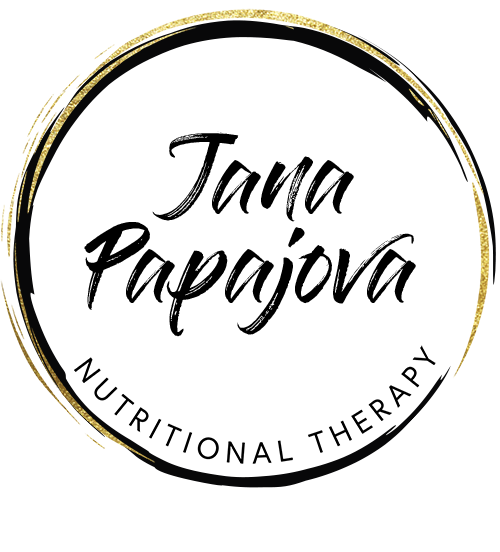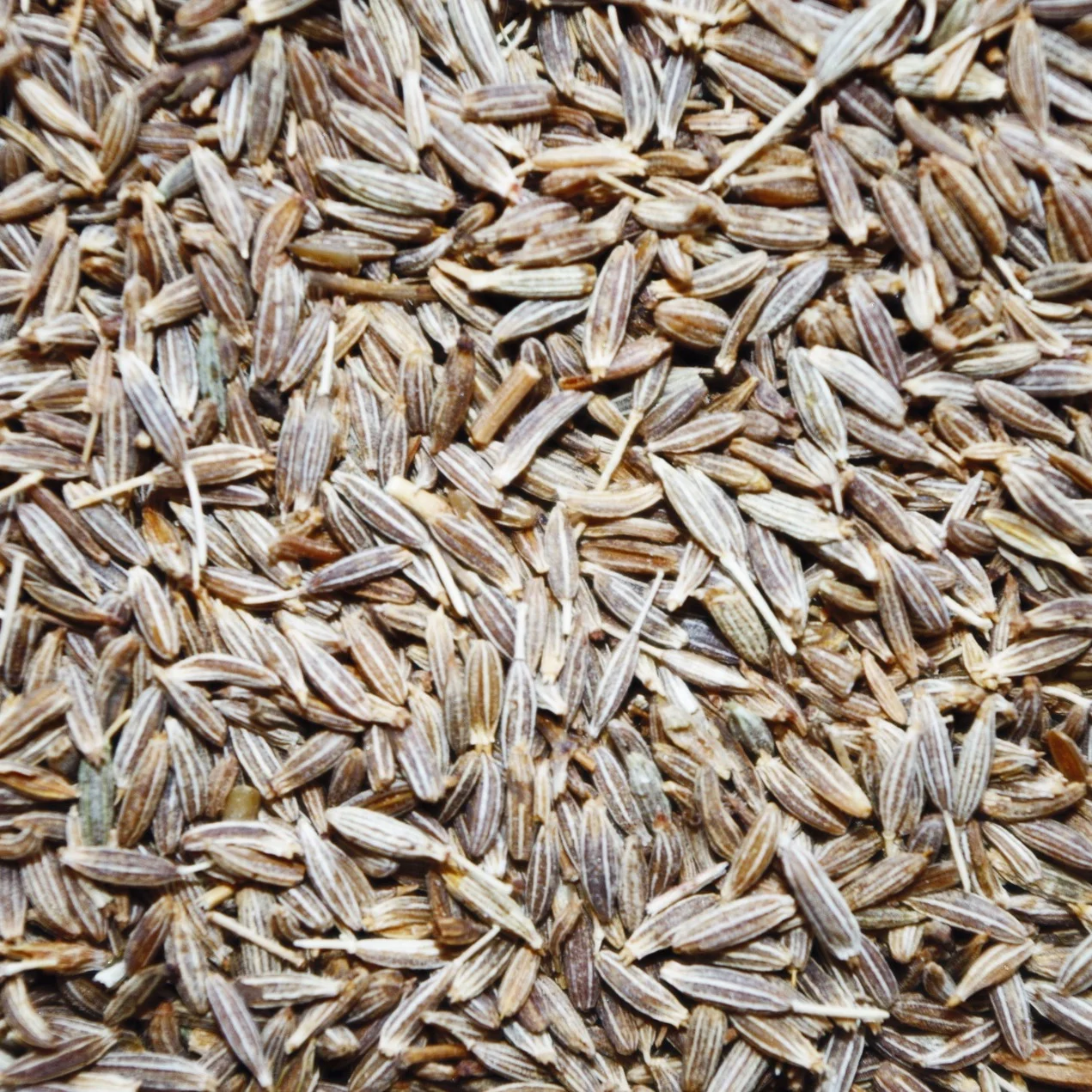Cumin
Estimated reading time: 5 minutes
Cuminum Cyminum, commonly known as cumin, is a small aromatic herb of the Apiaceae family. Cumin seeds are used as a spice for their distinctive aroma and nutty, peppery flavour. They were used by Romans as an alternative to pepper and as a paste to spread over bread and meat.
Using cumin as a spice increases antioxidant intake, provides iron, promotes digestion, may improve blood sugar control and may reduce food-borne illnesses.
NUTRITIONAL FACTS
Nutrients and Percent Daily Value in 1 tbsp (6 g) of whole cumin seeds (1):
· Calories: 22.5 kcal - 1%
· Fibre: 0.6 g - 3%
· Carbohydrates: 2.7 g - 1%
· Protein: 1,1 g - 2%
· Fat: 1.3 g - 2%
· Vitamin A: 76.2 IU - 2%
· Vitamin C: 0.5 mg - 1%
· Vitamin E: 0.2 mg - 1%
· Iron: 4 mg - 22%
· Manganese: 0.2 mg - 10%
· Calcium: 55.9 mg - 6%
· Magnesium: 22 mg - 5%
· Phosphorus: 29.9 mg - 3%
· Potassium: 107 mg - 3%
· Copper: 0.1 mg - 3%
· Zinc: 0.3 mg - 1%
Glycaemic Index: 1 = Low
HEALTH BENEFITS OF CUMIN
Cumin enhances appetite, taste perception, digestion, strength and vision (2, 3). Cumin has been used as galactagogue [ɡəˈlaktəɡɒɡ = food or drug that promotes or increases the flow of a mother's milk], however, no scientifically valid clinical trials support this use (4). 10 g/day of cumin seeds for 12 weeks increased milk production by 11.1% in Damascus goats (5).
In Iranian traditional medicine, cumin is considered stimulant, carminative [kɑːmɪnətɪv = relieving flatulence] and astringent and its therapeutic effects have been described on gastrointestinal, gynaecological and respiratory disorders, and also for the treatment of toothache and diarrhoea (6).
ANAEMIA
Iron deficiency anaemia is a global public health concern, being responsible for about 800 000 deaths per year worldwide (7). Lack of iron leads to less energy and weaker immune system.
Cumin is an ordinary looking little seed with extraordinary health benefits. 1 tablespoon of whole cumin seeds is packed with whopping 22% recommended daily value of energy boosting iron (1).
Adding cumin to cooking, especially for women during menstruation or those with low meat consumption may be a good idea.
GASTROINTESTINAL HEALTH
The aroma created by cumin activates the salivary glands in your mouth, which helps get your digestive juices flowing and start the initial digestion of food. Cumin also stimulates the secretion of pancreatic enzymes, compounds necessary for proper digestion and nutrient assimilation (3, 8); and increases the release of bile from the liver, therefore improving digestion of fats (6).
IMMUNITY
The anti-carcinogenic activity has been studied (in mice and rats) and cumin seeds significantly decreased the incidence of colon and liver cancer (2, 9). The anti-cancer properties have been attributed to their potential antioxidative action in the target tissue (6).
In a recent study, oral treatment with cumin showed immunomodulatory properties in normal and immune-suppressed animals (10).
DIABETES
The antidiabetic effects of cumin are well documented (6). One clinical study in overweight individuals showed a concentrated cumin supplement improved early indicators of diabetes (lead to weight loss and improved insulin metabolism) (11). While studies tested the effects of concentrated cumin supplements, it is suggested that regular use of cumin as a seasoning may help control blood sugar.
Protein glycation reactions [when sugars attach to proteins in the bloodstream] leading to advanced glycation end products (AGEs) are thought to be the major causes of different diabetic complications; including nephropathy, retinopathy and neuropathy. AGEs are created spontaneously when blood sugar levels are high over long periods of time, as they are in diabetes (12). This disrupt their normal function. AGEs levels are also higher in smokers (13). Cumin contains several components that reduce AGEs (14).
MAY IMPROVE CHOLESTEROL AND PROMOTE WEIGHT LOSS
A randomized clinical trial in 88 overweight/obese women showed that 3 g/day cumin powder with yogurt at two meals for 3 months reduced fasting cholesterol, triglycerides, and LDL cholesterol and increased HDL cholesterol (often referred to as good cholesterol) (15). Weight, BMI, waist circumference and fat mass also reduced. It’s noteworthy mentioning that these women were also following weight reduction diet.
Another study showed similar results. Overweight participants who took 75 mg cumin powder supplement twice daily for 8 weeks had beneficial effects on weight, BMI, fasting glucose, triglycerides, total-cholesterol and LDL-cholesterol levels (16).
OSTEOPOROSIS
Cumin's hormone-modulating properties have only recently been confirmed. In 2008, a study demonstrated that cumin seeds were capable of inhibiting loss of bone density and strength as effectively as oestrogen in a female rat model of age-associated osteoporosis (17).
While cumin is healthy you shouldn’t overuse it. Possible allergic reactions have been reported, but are very rare (18). Those allergic to cumin or related herbs should avoid it. If you have diabetes, keep an eye on your blood sugar levels once you start using cumin. Some studies show that cumin may inhibit spermatogenesis and reduce fertility in male rats (19, 20).
I prefer using food instead of supplements. But if you decide to try supplements, let your doctor know and use the supplements to complement, not replace medical treatments.
References:
1. Nutrition Data. (2018). Spices and herbs: Cumin Seed. [online]. Available at: https://nutritiondata.self.com/facts/spices-and-herbs/184/2.
2. Pandey, S. Patel, M. Mishra, A. et al. (2015). ‘Physio-Biochemical Composition and Untargeted Metabolomics of Cumin (Cuminum cyminum L.) Make It Promising Functional Food and Help in Mitigating Salinity Stress’. PLOS ONE, 10(12), p.e0144469.
3. Shavakhi, A. Torki, M. Khodadoostan M. et al. (2015). ‘Effects of cumin on nonalcoholic steatohepatitis: A double blind, randomised, controlled trial’. Advanced Biomedical Research, 4, p.212.
4. Drugs and Lactation Database. (2018). Bethesda (MD): National Library of Medicine (US); 2006-. [online]. Available at: https://www.ncbi.nlm.nih.gov/books/NBK501922/.
5. Morsy, T. Kholif, A. Matloup, O. et al. (2018). ‘Mustard and cumin seeds improve feed utilisation, milk production and milk fatty acids of Damascus goats’. Journal of Dairy Research, 85(02), pp.142-151.
6. Johri, R. (2011). ‘Cuminum cyminum and Carum carvi: An update’. Pharmacognosy Reviews, 5(9), p.63.
7. Levi, M. Rosselli, M. Simonetti, M. et al. (2016). ‘Epidemiology of iron deficiency anaemia in four European countries: a population-based study in primary care’. European Journal of Haematology, 97(6), pp.583-593.
8. Milan, K. Dholakia, H. Tiku, P. et al. (2008). ‘Enhancement of digestive enzymatic activity by cumin (Cuminum cyminum L.) and role of spent cumin as a bionutrient’. Food Chemistry, 110(3), pp.678-683.
9. Aruna, K. Sivaramakrishnan, V.M. (1992). ‘Anticarcinogenic effects of some Indian plant products’. Food and chemical toxicology, 30(11), pp.953-956.
10. Chauhan, P. Satti, N. Suri, K. et al. (2010). ‘Stimulatory effects of Cuminum cyminum and flavonoid glycoside on Cyclosporine-A and restraint stress induced immune-suppression in Swiss albino mice’. Chemico-Biological Interactions, 185(1), pp.66-72.
11. Taghizadeh, M. Memarzadeh, M. Asemi, Z. et al. (2015). ‘Effect of the cumin cyminum L. Intake on Weight Loss, Metabolic Profiles and Biomarkers of Oxidative Stress in Overweight Subjects: A Randomized Double-Blind Placebo-Controlled Clinical Trial’. Annals of Nutrition and Metabolism, 66(2-3), pp.117-124.
12. Singh, V. Bali, A. Singh, N. et al. (2014). ‘Advanced Glycation End Products and Diabetic Complications’. The Korean Journal of Physiology & Pharmacology, 18(1), p.1.
13. Nicholl, I.D. Stitt, A.W. Moore, J.E. et al. (1998). ‘Increased levels of advanced glycation end products in the lenses and blood vessels of cigarette smokers’. Molecular Medicine, 4(9), pp.594-601.
14. Zhang, Y. Ma, H. Liu, W. et al. (2015). ‘New Antiglycative Compounds from Cumin (Cuminum cyminum) Spice’. Journal of Agricultural and Food Chemistry, 63 (46), pp.10097-10102.
15. Zare, R. Heshmati, F. Fallahzadeh, H. et al. (2014). ‘Effect of cumin powder on body composition and lipid profile in overweight and obese women’. Complementary Therapies in Clinical Practice, 20(4), pp.297-301.
16. Taghizadeh, M. Memarzadeh, M. Abedi, F. et al. (2016). ‘The Effect of Cumin cyminum L. Plus Lime Administration on Weight Loss and Metabolic Status in Overweight Subjects: A Randomized Double-Blind Placebo-Controlled Clinical Trial’. Iranian Red Crescent Medical Journal, 18(8), p.e34212.
17. Shirke, S.S. Jadhav, S.R. and Jagtap, A.G. (2008). ‘Methanolic extract of Cuminum cyminum inhibits ovariectomy-induced bone loss in rats’. Experimental Biology and Medicine (Maywood), 233(11), pp.1403-1410.
18. Boxer, M. Roberts, M. and Grammer, L. (1997). ‘Cumin anaphylaxis: A case report’. Journal of Allergy and Clinical Immunology, 99(5), pp.722-723.
19. Saxena, P. Gupta, R. and Gupta, R. (2015). ‘Contraceptive studies of isolated fractions of Cuminum cyminumin male albino rats’. Natural Product Research, 29(24), pp.2328-2331.
20. Gupta, R. Saxena, P. Gupta, R. et al. (2011). ‘Evaluation of reversible contraceptive activities of Cuminum cyminum in male albino rats’. Contraception, 84(1), pp.98-107.

